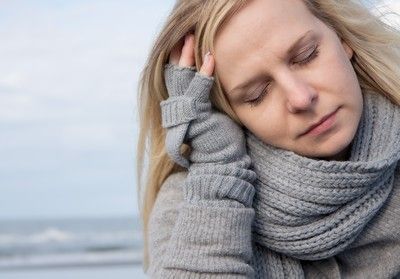 Better sleep, physical activity, good nutrition and reducing stress and environmental toxins are the keys to reducing chronic pain, especially in women, said Dr. Robert Bonakdar, at the 2nd annual Lifestyle Medicine Summit in Chicago.
Better sleep, physical activity, good nutrition and reducing stress and environmental toxins are the keys to reducing chronic pain, especially in women, said Dr. Robert Bonakdar, at the 2nd annual Lifestyle Medicine Summit in Chicago.
All too often, though, clinicians focus on the “chief complaint”—the pain itself—and miss opportunities to truly help their patients. This is particularly problematic for women, who are intrinsically more susceptible to chronic pain than men, owing their increased cortical connectivity.
“The more active the brain is, and the more interconnected the cells are relative to their neighbors, the more pain we have; and nobody is more connected than women,” said Dr. Bonakdar, director of pain management at Scripps Center for Integrative Medicine, La Jolla, CA.
On average, women tend to show more neural connections between different parts of their brains than do men. While this sometimes result in greater wisdom, it also renders them much more aware of pain, Dr. Bonakdar said. Across a wide range of conditions, they report worse pain intensity than men, and use more disability days due to chronic pain.
Women require 30% more morphine following surgery than men to obtain post-operative pain relief. There are studies to suggest that there may actually be a compensatory mechanism in women’s neurophysiology whereby intense chronic pain results in a diminution of gray matter. Women may lose as much as 1.3 cubic centimeters of gray matter per year of chronic pain, said Dr. Bonakdar, who is also the current president of the American Academy of Pain Management.
He noted that a similar eradication of brain tissue has been observed in people suffering from post-traumatic stress disorder (PTSD).
Though the need may be pressing, it is best not to try and tackle chronic pain head-on, Dr. Bonakdar advises.
“I feel very passionately about pain, but if I spend too much time thinking about pain itself, I’m not going to be treating it correctly.” The best outcomes, he says, come from a comprehensive focus on SANE remedies, those that address: Sleep & Stress, Activity, Nutrition, and Energetics & Environment.
Sleep & Stress: To help women sleep better, Dr. Bonakdar recommends herbs like hops, lemon balm, passionflower or valerian an hour before bedtime. (He also suggested curcumin, ginger, and melatonin as alternatives). It is also important for patients to set regular bedtimes, minimize use of electronics prior to bedtime, and to make sure their bedrooms are dark. For management of stress, he recommended Omega 3 fatty acids and/or CoQ-10.
(He also suggested curcumin, ginger, and melatonin as alternatives). It is also important for patients to set regular bedtimes, minimize use of electronics prior to bedtime, and to make sure their bedrooms are dark. For management of stress, he recommended Omega 3 fatty acids and/or CoQ-10.
Activity: Some studies indicate that exercise (40 minutes three times per week) is as effective as pharmaceutical treatment for migraine prophylaxis. It may be effective in other chronic pain conditions as well.
Nutrition: There’s are many reasons why so many women seem to love dark chocolate, one of which may be that it reduces inflammation. A recent Italian study showed that increased consumption of dark chocolate correlates with low serum concentrations of C-reactive protein, an indicator of inflammation. Omega-3s are a big help too, as they decrease symptoms of major depression when used in conjunction with pharmaceutical antidepressants. Supplementation with Co-Q10, at a dose level of 1-3 mg/kg body weight, reduced chronic headache frequency by about 33% at 3-month follow-up, and reduced headache disability by more than half.
Energy: Dr. Bonakdar is a big advocate of hypnotherapy, Tai Chi, and Yoga for pain reduction. Gentle, regular forms of exercise like these can improve a woman’s overall energy level, which over time may result in a reduction of pain across a wide variety of conditions.
Ginger is one of his favorite remedies for women experiencing chronic pain. “I’m a big Zingiber aficionado, because it is the most potent agent for chronic pain.” It can be taken as a tea, in supplement form, or as a culinary spice. Generally, ginger is very safe, but be aware that, “sometimes it is a little too heat-producing” and might make some patients uncomfortable.
Chronic pain, whatever the specific diagnosis, can be extremely frustrating for patients, and many are understandably eager to find relief. But reliance on pharmaceutical fixes is a very slippery slope. Prescription pain meds may be effective initially, but the efficacy tends to diminish with duration and frequency of use, and dependency is an ever-present problem. OTC meds may not induce dependency but they carry a significant—though often ignored–risk of side-effects.
“I make a deal with my patients, and ask them to give me a few days of using nutraceuticals, and good bedtime hygiene and rituals, and we can begin to reduce their chronic daily headache,” Dr. Bonakdar said.
His group is conducting a trial comparing the typical high-carb, high-fat American diet with an anti-inflammatory diet among rheumatoid arthritis patients. “A high-carb, high-fat diet has a momentary analgesic effect, so to make up for it, we added blueberries and green tea to the anti-inflammatory diet,” he explained.
END







